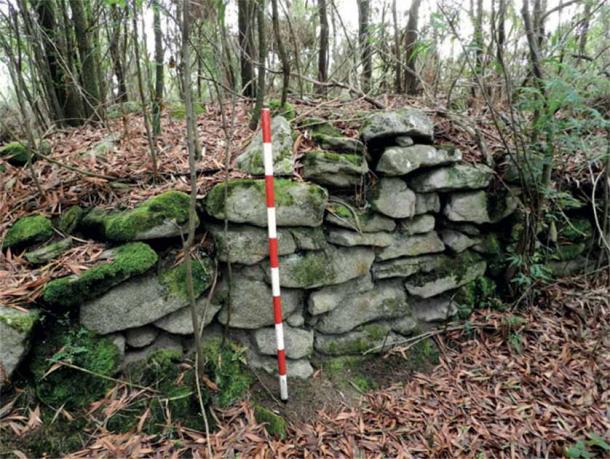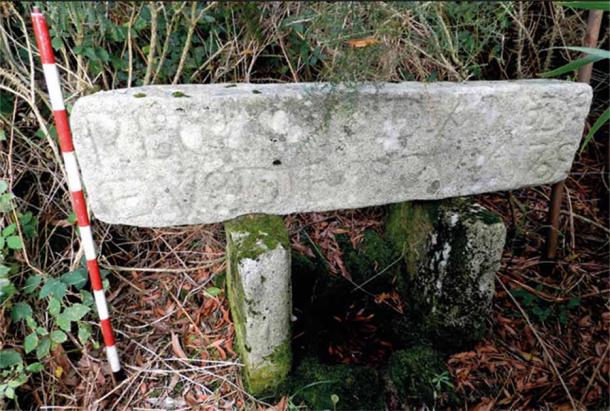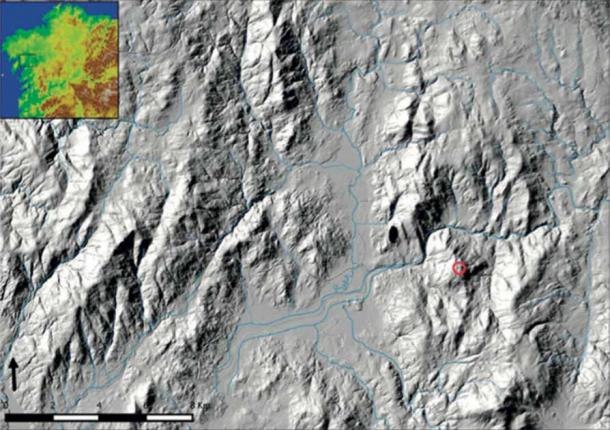
LiDAR Reveals Medieval Fortress in Spain, Rewriting History
An ancient 25-acre (10-hectare) fortified settlement found on a hilltop in Galicia was long ago identified as an Iron Age village, meaning it was dated to the period between 1,500 and 500 BC. But a new study published by a pair of Spanish archaeologists from the University of Santiago de Compostela, shows that the Spanish settlement named Castro Valente dates not to the Iron Age but to the early medieval period, most likely to the fifth through seventh centuries AD. This would make it over 1,000 years younger than previously thought.
LiDAR Technology Reveals Medieval Fortress
It is rare for archaeologists to blunder so badly when dating ancient structures and monuments. But in this case a huge mistake was made, and it has taken more than a century to finally set the record straight about the true identity of Castro Valente, a sprawling installation built on the apex of a 1,300-foot (400-meter)-high hill overlooking the municipalities of Padrón and A Estrada.
- LiDAR Reveals Massive Mobilization of Labor Needed to Build Maya Site
- Why Archaeology Is So Much More Than Just Digging
The tool that helped the Spanish archaeologists, Mario Fernández-Pereiro and José Carlos Sánchez-Pardo, finally correct the historical record is known as LiDAR, which stands for Light Detection and Ranging. From an aerial platform, the LiDAR system beams lasers at the ground and then creates accurate three-dimensional images of archaeological sites from the contour data that is reflected back.
LiDAR is extraordinarily useful for mapping areas that are covered by dense forest (like the Castro Valente site), since the reflecting laser light passes right through vegetation. Using LiDAR, analysts are able to examine the ruins of ancient settlements in far more precise detail than is allowed by traditional aerial surveys.

Remains of the wall which once surrounded the medieval fortress at Castro Valente. (Fernàndez-Pereiro & Sánchez-Pardo / CC BY-NC-ND 4.0)
Medieval Fortress Under Threat to Generate Alternative Energy
From the imagery collected during the Galician survey, and from their discoveries during subsequent excavations, the University of Santiago de Compostela archaeologists have already gathered a great deal of valuable information about Castro Valente.
As they disclose in an article published in the Spanish-language journal Cuadernmos de Arqueologia de la Universidad de Navarra, they’ve been able to confirm that 30 stone towers once flanked a sturdy settlement wall that was three-quarters of a mile (1.2 kilometers) long and surrounded the 25-acre (10-hectare) interior area.
Ground-level surveys show the walls were built in parallel sections that were filled with earth and gravel in between, creating a heavily reinforced protective barrier that was between eight and 14 feet (2.5 to 4.5 meters) thick. The towers were covered by roofs that matched the style of the awe-inspiring Roman walls of Lugo, which were constructed in the third century AD to defend a town that is also located in Spain’s autonomous Galicia region.
All in all, the actual layout and physical characteristics of the expansive Castro Valente site were clearly consistent with an early medieval settlement and not with something from the Iron Age.
Unfortunately, the remains of the fortress have been damaged by reforestation projects and the installation of fire trails. Now, there are plans to clear more of the area to install a wind energy complex, which would include four turbines, six electric towers and an electrical substation.

A carved stone with an inscription that describes an old chapel that once stood at the site of the medieval fortress at Castro Valente. (Fernàndez-Pereiro & Sánchez-Pardo / CC BY-NC-ND 4.0)
Full Disclosure at the Medieval Fortress Enclosure
Researchers Fernández-Pereiro and Sánchez-Pardo learned that the Castro Valente site was referred to locally A Cerca, which in the Galician language means “the enclosure.” The archaeologists thought this indicated that the fortress had been constructed for defensive purposes, and not as a general-use settlement.
The existence of the fortress was first reported in 1865 by archaeologist Manuel Murguía, who in writing about the history of Galicia acknowledged that “about a league northeast of Iria (modern-day Padrón) there is a formidable castro—Castro Valente—which still retains part of the wall that surrounded it.”
Castro Valente was mentioned again in a 1913 article appearing in a weekly periodical, and it was eventually listed officially as an Iron Age site by the Archaeology Service of the Council of Galicia. It seems little in-depth research had ever been done to try to confirm that Iron Age identity, which has now been dispelled, thanks to the advanced ground mapping capacities of LiDAR technology.
At ground level, Castro Valente has proven to be a difficult site to survey accurately and comprehensively. Only seven of the original towers remain in any sort of detectable form, and the dense vegetation that now covers the summit of the hill is virtually impenetrable on most sides of the enclosure.
“[It’s] only possible to locate and document… the main access to the place, which is found in the southwestern sector of the fortified settlement,” the researchers reported, writing about the ground-level surveys they’ve completed. Fortunately, LiDAR imagery made it possible to identify two other access points, on the north and southeast sides.

The location of Castro Valente and its medieval fortress in Spain. (Fernàndez-Pereiro & Sánchez-Pardo / CC BY-NC-ND 4.0)
Remains Uncovered Within Castro Valente’s Impenetrable Vegetation
Searching inside the interior space of the enclosure, the experts believe they have located the remains of structures made from stone and perishable materials. Near a water source in the southern area of the enclosure they found a carved stone with an inscription that describes an old chapel that once stood at the site (which is obvious proof of a medieval origin for the settlement).
During the excavations undertaken at the site, the Spanish archaeologists and their team have found pieces of brick and tiles from Spain’s Roman era (which lasted into the fifth century), along with fragments of red-paste ceramics. Furthermore, multiple digs in the northwestern part of the enclosure and near the wall have revealed valuable information about the construction methodologies used to create the impressive medieval fortress.
“The results have allowed us to document the construction technique of the defensive system and locate a possible wall-like structure belonging to an intramural building. In the survey carried out in one of the [towers], a large number of fragments of [tiles] was recorded, which makes us think that this tower could have been covered by these [Roman] pieces,” the archaeologists’ report stated.
- Over 800 Ancient Monuments Found in Polish Forest with LiDAR!
- Lost ‘Cosmic’ Amazonian Villages Discovered in Brazilian Rainforest
Within the walls, the archaeologists have found tantalizing remains of a large stone building. However, they said that “it’s not yet possible to clarify its functionality or the characteristics of the structure to which it belongs.” They also found scattered materials they described as being of “low quantity and quality, which could indicate a time near the end of the Roman Empire until the middle of the High Middle Ages (5th-7th centuries).”
At Castro Valente, the Fun Has Just Begun
Despite having limited to time to carry out excavations in support of the LiDAR findings, the archaeologists are impressed by what they’ve found so far. They are hopeful they will find more secrets about the medieval hilltop fortress and the people who built it.
“[These] are only the first and exciting steps to determine the true nature of this unique fortified enclosure,” they concluded, anticipating further explorations of the enigmatic medieval fortress in the months and years to come. It remains to be seen, however, if the wind power project that could threaten the sanctity of the lightly-excavated medieval site at Castro Valente will be put on hold, to give the archaeologists more time to complete their investigations.
Top image: Northeastern view of the remains at Castro Valente, where the medieval fortress has been uncovered thanks to LiDAR technology. Source: Fernàndez-Pereiro & Sánchez-Pardo / CC BY-NC-ND 4.0
By Nathan Falde















